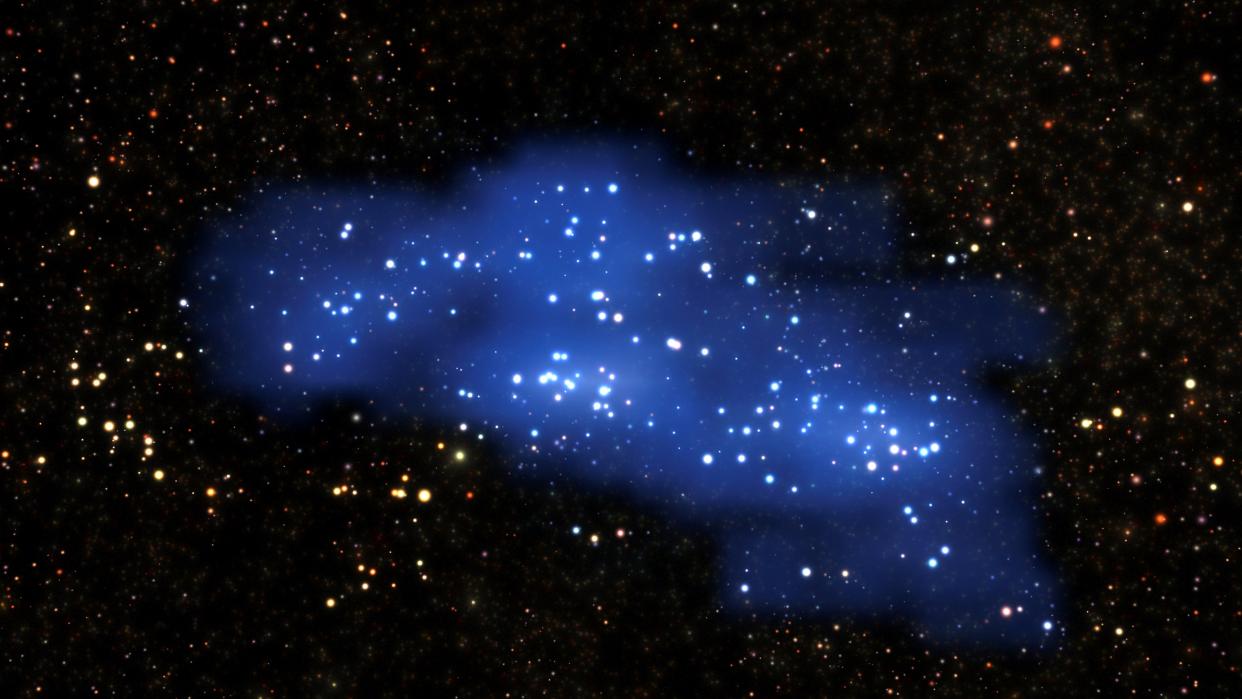Telescope spots ancient structure a million billion times the size of our sun

Astronomers have spotted a vast structure bigger than any previously spotted in the years just after the Big Bang.
The galaxy proto-supercluster – named Hyperion – is the largest spotted in the early universe, just two billion years after the Big Bang.
Due to its extreme distance from us, it appears to observers on Earth as it was more than ten billion years ago – 2.2 billion years after the Big Bang.
It’s mass is calculated to be more than one million billion times that of the sun.
The find surprised astronomers: the colossal mass is similar to the largest structures observed in the universe today, but finding it in the early universe was a shock.
READ MORE FROM YAHOO NEWS UK:
Three people killed after caravan is towed the wrong way down a busy motorway
One of Britain’s most prolific paedophiles has ‘excessive’ sentence cut by seven years
Muslims are the target of 52% of religious hate crime in England and Wales, police figures reveal
Boris Johnson’s popularity slumps to its lowest ever level, poll finds
The worst British railway stations for delays have been revealed
The researchers used the VIMOS instrument of ESO’s Very Large Telescope to spot the object in the constellation of Setans.
Hyuperion has seven hyper-density regions connected by filaments – and is very different from superclusters nearer our planet.
Lead author Olga Cucciati said, ‘This is the first time that such a large structure has been identified at such a high redshift, just over 2 billion years after the Big Bang.
‘Normally these kinds of structures are known at lower redshifts, which means when the universe has had much more time to evolve and construct such huge things.
‘It was a surprise to see something this evolved when the universe was relatively young!’


